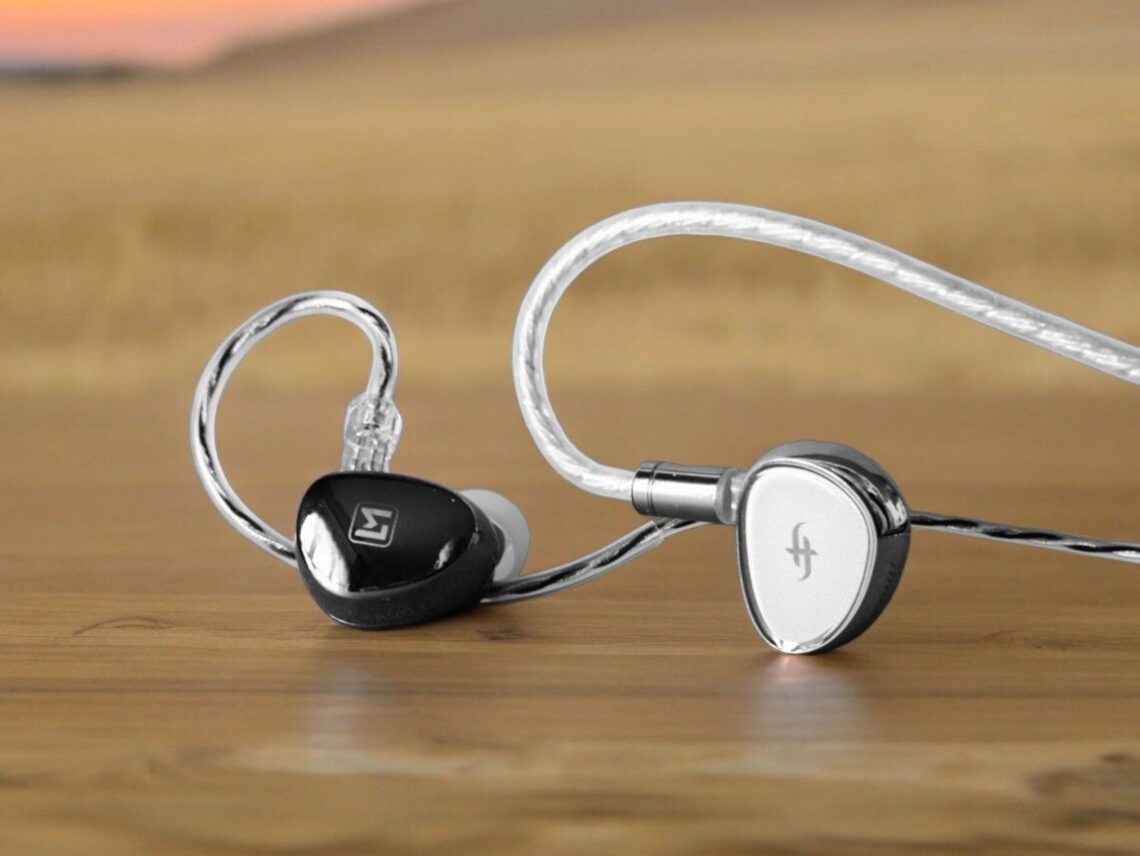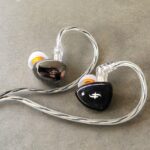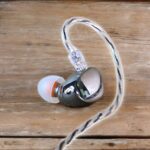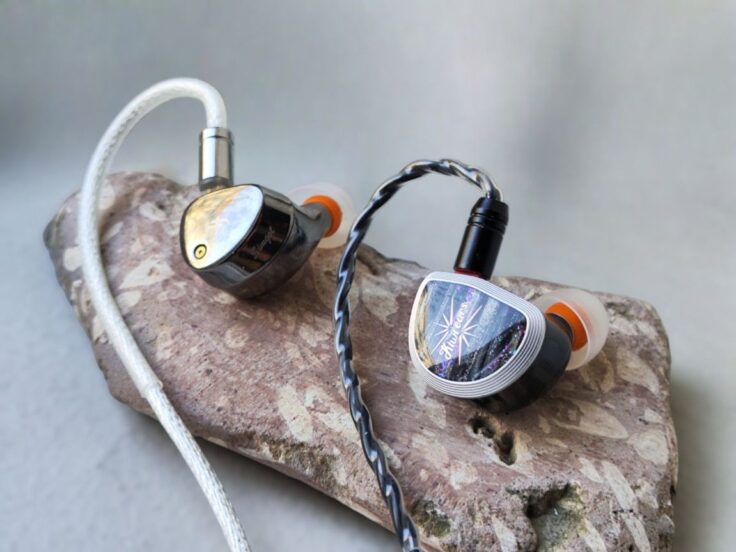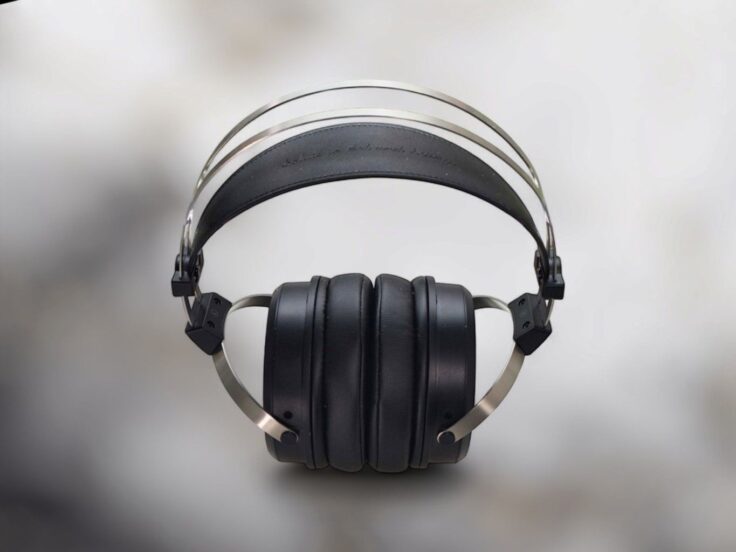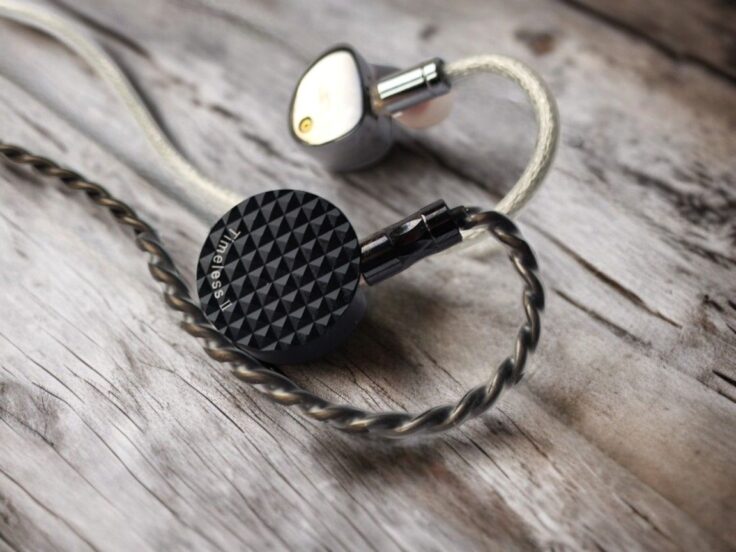The Simgot EA500LM and EA1000 are single dynamic driver earphones. They have a lot in common, both in terms of design, technicalities, and tuning. The price sets them apart, with the EA500LM just below 100 USD and the EA1000 just above 200 USD.
The Simgot EA1000 was launched in late 2023, as a smaller and more affordable variant of the EA2000. The EA500LM hit the market in early 2024 as an upgrade of the EA500.
Both the EA1000 and the EA500LM use a single full-range dynamic driver which employ Simgot’s “dual magnet, dual cavity” driver design. However, the diaphragms are very different; the EA500LM uses a newly developed lithium-magnesium dome diaphragm, while the EA1000 uses the same kind of diaphragm as the bigger EA2000: a “sputter deposition purple-gold diaphragm.” Both diaphragm designs aim to provide high rigidity and light weight.
The EA1000 utilizes a passive radiator in a semi-closed design while the EA500LM has a small vent hole. They are both metal constructions with interchangeable nozzles, both supplied with 3 pairs of tuning nozzles. The nozzles have a significant effect on the sound with both earphones. In this comparison, I will use the “red ring steel nozzles” on the EA500LM and compare it to all three nozzles of the EA1000. I will elaborate below.
Both the EA500LM and the EA1000 are comfortable to wear and sit nicely in the ear. They come with high-quality silver-plated OFC (oxygen-free copper) cables with standard dual-pin 0.78mm connectors on the IEM side and a standard 3.5mm unbalanced connector on the other end. The cable of the EA500LM is thinner.
You can find my full, separate reviews here:
- Simgot EA1000 Review
- Simgot EA500LM Review
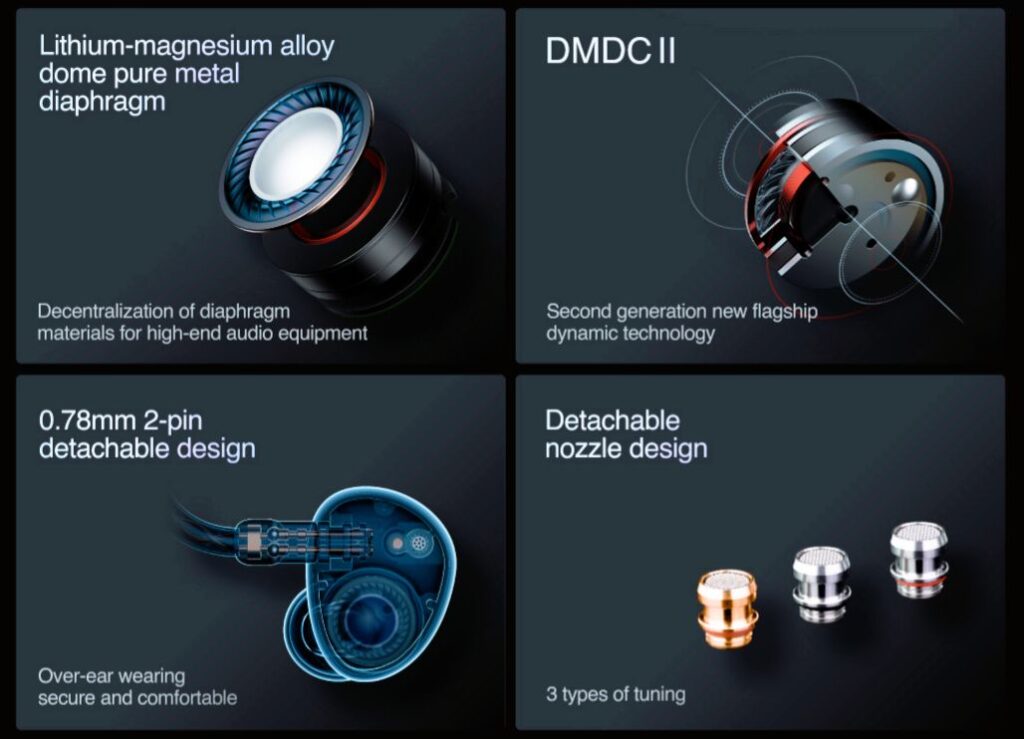
SIMGOT EA500LM SPECIFICATIONS
- Driver: single full range “dual-magnetic, dual-cavity” 2.gen dynamic driver
- Diaphragm: lithium-magnesium dome
- Impedance 21Ω±15%(@1kHz)
- Sensitivity 123 dB/Vrms (@1kHz Gold Copper nozzle & Red Silicone Ring)
- 123dB/Vrms (@1kHz Silver Steel nozzle & Red Silicone Ring)
- 124dB/Vrms (@1kHz Silver Steel nozzle & Black Silicone Ring)
- Frequency response range: 10 Hz–50 kHz
- Effective frequency response: 20 Hz–20 kHz
- Connector: 0.78mm 2-pin
- Cable material: high-purity silver-plated OFC copper cable
Check the current price here:
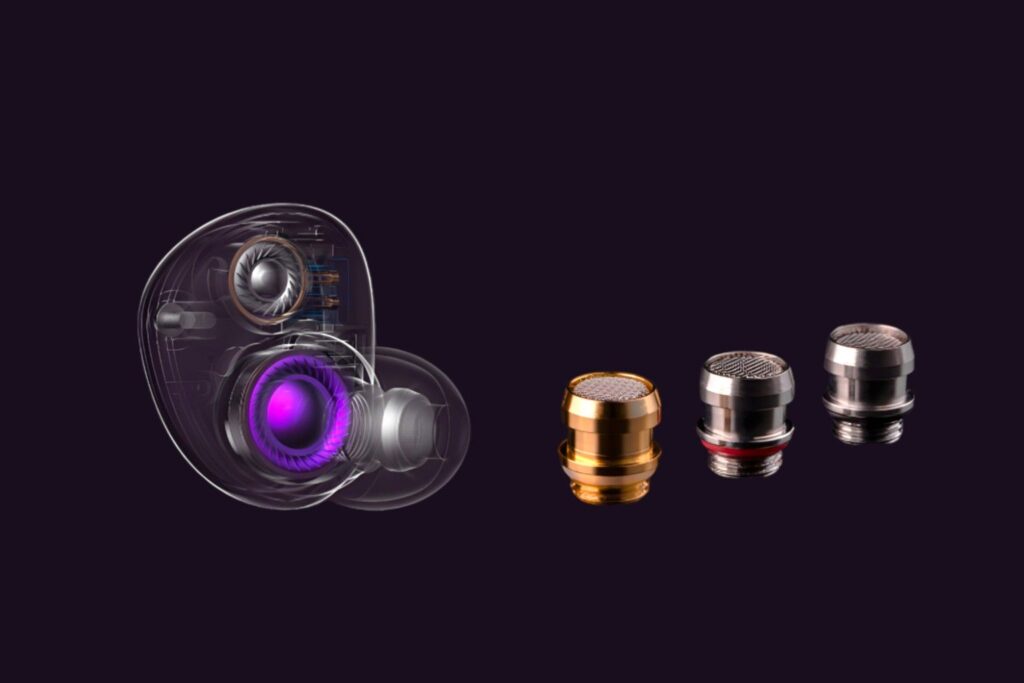
SIMGOT EA1000 SPECIFICATIONS
- Driver: single 10mm full range “dual-magnetic, dual-cavity” 2nd gen. dynamic driver
- Diaphragm: “sputter deposition purple-gold”
- 6mm Passive Radiator
- Impedance: 16 Ohms
- Sensitivity: 127 dB/Vrms
- Frequency Response: 10Hz-50kHz
- Detachable Cable: 120 cm Silver-Plated OFC Litz Cable
- Earphones connector: 0.78mm 2 pin – Cable termination: 3.5mm
- 3 pairs of tuning nozzles included
Check the current price here:
- Linsoul: Simgot EA1000
- Amazon: Simgot EA1000
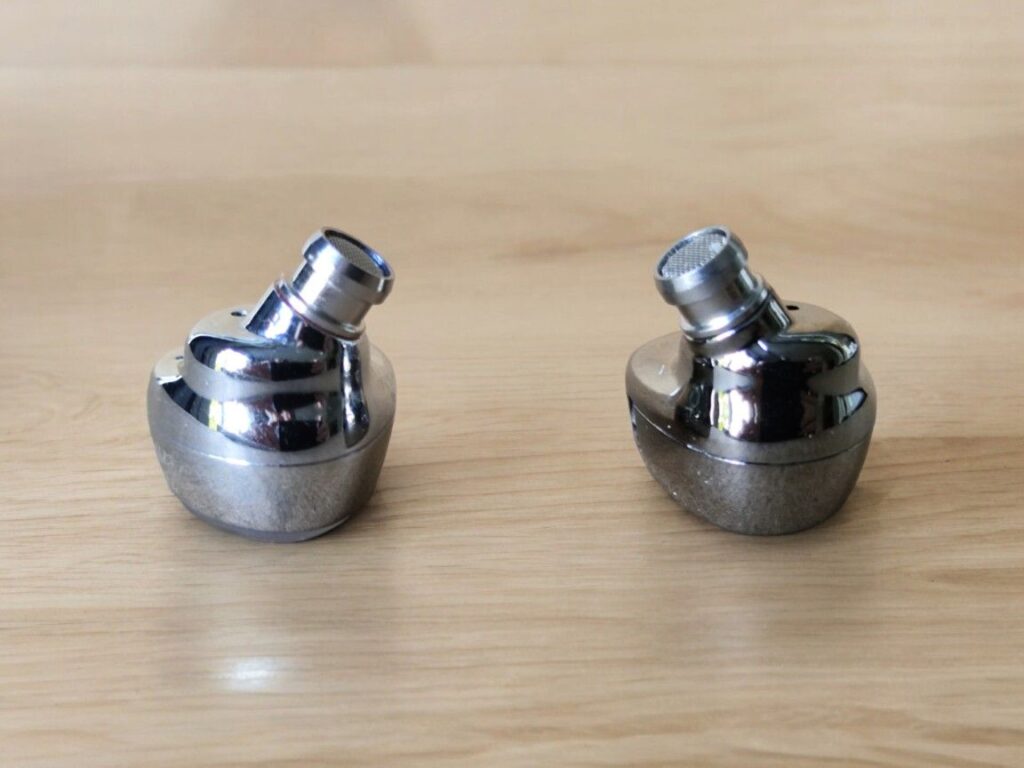
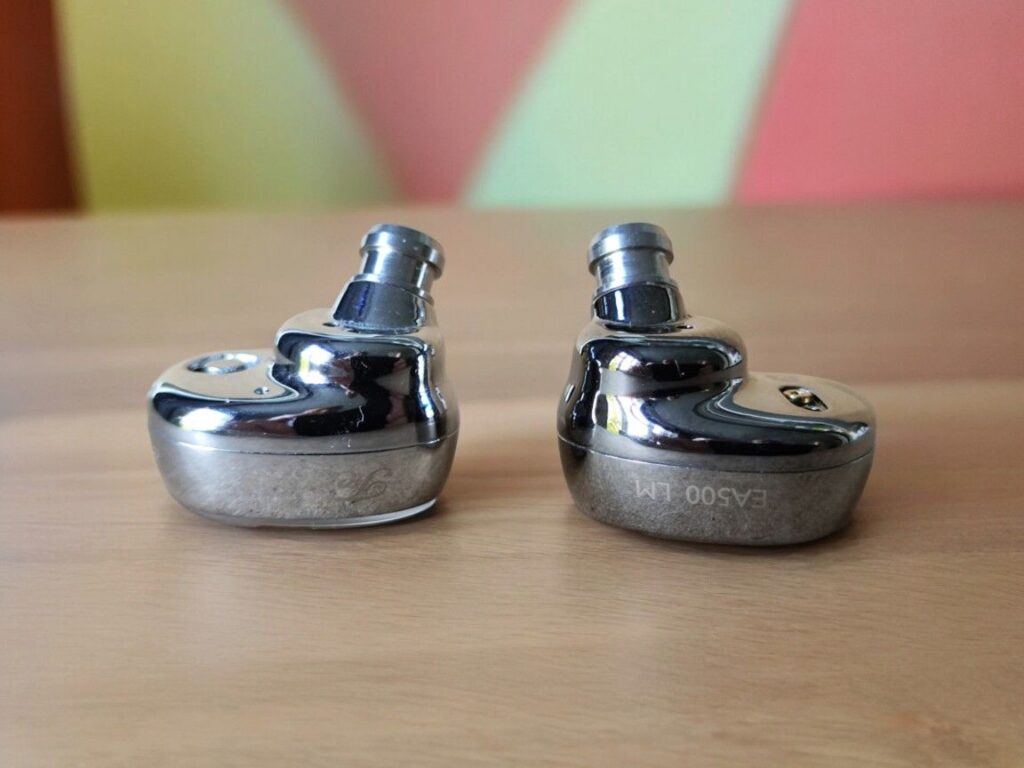
TUNING NOZZLES
Tuning options can come in the form of nozzles, dip switches, cable tuning adapters or ear tips. Oftentimes it is a gimmick that looks good on paper, but in practical use, there are only one or two options that sound good. That is not the case here: The tuning nozzles on the EA1000 and EA500LM have a significant effect on the sound, and all nozzles are good – in different ways. When working on my separate reviews of these two earphones, I did a thorough listening comparison between the nozzles.
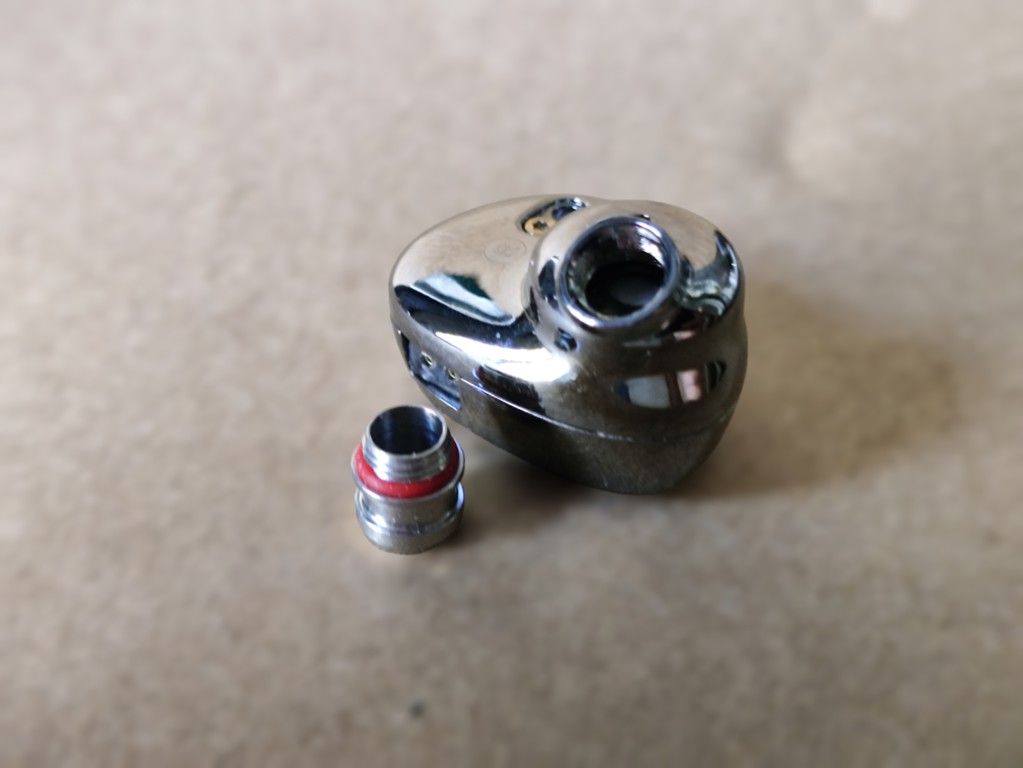
From visible inspection I can tell the following:
EA500LM Nozzles
- Red Ring Steel: Empty barrel
- Black Ring Steel: Filled with black foam
- Red Ring Golden Brass: Filled with black foam
EA1000 Nozzles
- Red Ring Steel: Empty barrel
- Black Ring Steel: Filled with black foam
- Clear Ring Golden Brass: White fabric with hole in the middle attached to the metal mesh
I do not know if the black foam is the same across, but the black foam in the golden brass and black ring steel nozzle of the EA500LM might look slightly different. The only clear visible difference between the nozzles supplied with the EA500LM and EA2000 is between the two golden brass nozzles. The pair that comes with the EA1000 has a clear ring and no foam, but a piece of white fabric under the mesh with an opening in it, like a donut. The red ring golden brass nozzles that come with the EA500LM have black foam inside of it.
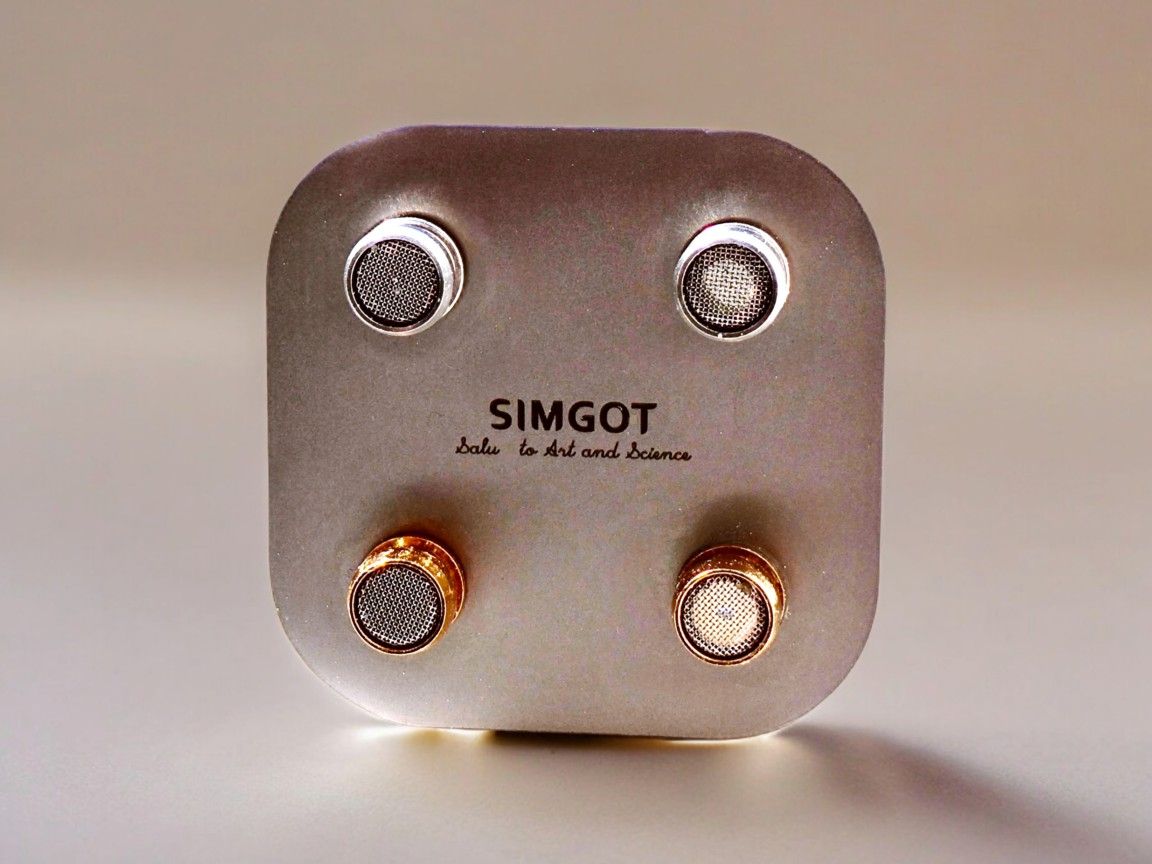
EA1000 and EA500LM nozzles : Top left black ring with foam, top right red ring empty barrel – bottom left golden brass red ring with foam, bottom left golden brass clear ring with white tissue
Describing the difference between the sound of the nozzles is not easy and it is affecting the sound in and not so straightforward manner. The nozzles effects the frequency response but also the resonances, how freely the diaphragm can move etc. In other words it is not like EQ.
In the following I will briefly describe how I find the different nozzles to sound on each of the earphones:
EA1000 Nozzles Tuning
Red Ring Steel Nozzles: These are the empty barrel nozzles. They give strong, tight bass, and a generally warm, detailed and dynamic sound. The downside is that it sometimes gets a bit shouty. My guess it is because some resonance issues in the upper midrange.
Golden Clear Ring Brass Nozzles: Compared to the red ring nozzle, the highs and upper mids are tuned down, making it sound more laid back. Often the mids are warmer and thicker, but it depends on the track if there’s a small or a large audible difference.
Black Ring Steel Nozzles: These have black foam inside. There’s less mid-range warmth than the golden nozzles, but more clarity.
EA500LM Nozzles Tuning
Red Ring Steel Nozzles: These are the empty barrel nozzles. They’ve got strong, tight bass, and a warm midrange. The sound is very dynamic, and has liquid, yet present highs. It’s like a blend of the two other nozzles.
Golden Red Ring Brass Nozzles : These nozzles have black foam inside. There are lusher mids, thicker bass and a more laid back treble.
Black Ring Steel Nozzles: These nozzles also have black foam, but I suspect it is a different foam than the golden brass nozzles have. They are crisper with more treble presence than the other two. There’s tighter bass and more textured mids.
From the factory, the red ring steel nozzles are mounted on the EA1000 and the golden brass nozzles are mounted on the EA500LM – at least that’s the way it was when I received them.
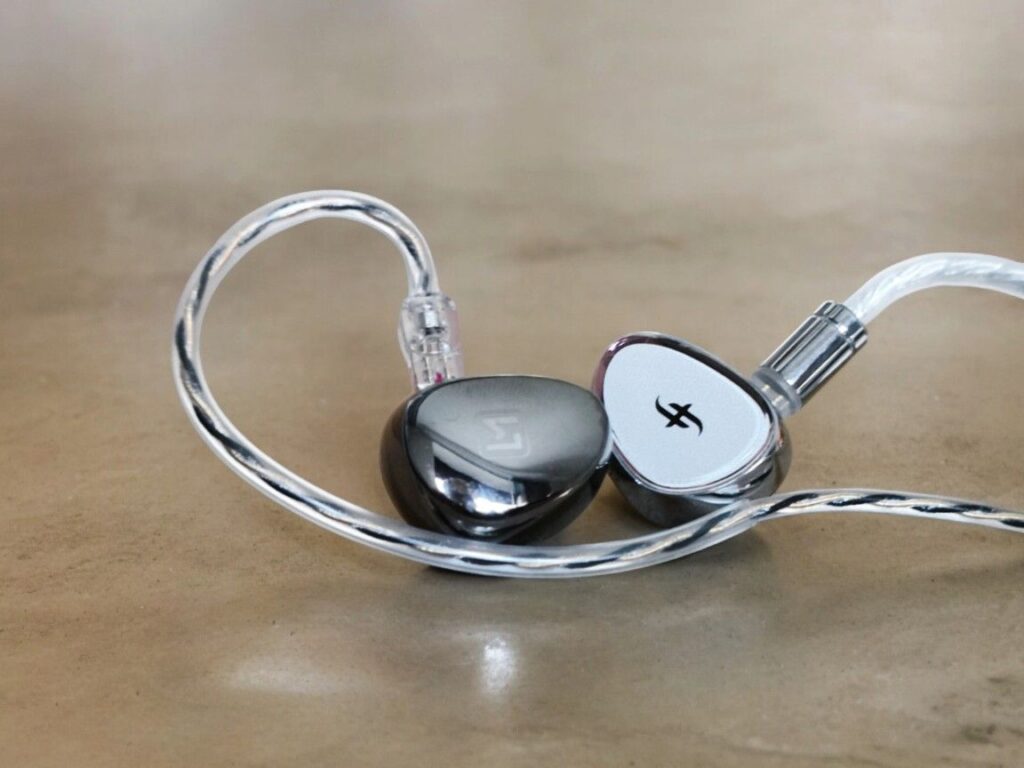
COMPARISONS
As mentioned above, for this comparison the EA500LM are equipped with what I find to be the most neutral-sounding nozzles: the open red ring steel nozzles. I chose to compare it to the EA1000 using all the three nozzles supplied with the EA1000. I did this partly out of curiosity and partly because it was hard to decide which is objectively the most “neutral” sounding of the EA1000 nozzles. That’s being said that I will remind the reader that the open barrel red ring steel nozzles are seemingly identical on both the EA500LM and EA1000, so I always start each comparison with those. What I did was basically to go through the playlist three times, each time with a different nozzle mounted on the EA1000, keeping the EA500LM the same as a reference.
I use both earphones with my preferred Spinfit CP145 tips, which as good as always secure a good seal for my ears.
Associated electronic equipment: Topping A90 amplifier with the RME ADI-2 DAC FS as source. The RME sounds excellent by itself, but it’s more practical for me to use the Topping.
Young Vivaldi’s Violin Concerto RV820 III by Ensemble Modo Antiquo
EA1000 with red ring steel nozzles: The EA1000 is clearer with better articulation. There’s more detail and the space between instruments is blacker.
EA1000 with golden brass nozzles: The EA1000 and the EA500LM are not very different. Both are detailed and nicely textured, with a similar tonality. The EA1000 has a warmer tone and sounds a bit more effortless.
EA1000 with the black ring nozzles: The EA1000 has a bit more detail and better imaging, but it is also a bit crisper and sharper, making me like the timbre of the EA500LM more.
Brahms’ Symphony No. 2 III by Paavo Järvi
EA1000 with red ring steel nozzles: The EA500LM sounds smoother, the EA2000 is crisper and clearer with better articulation.
EA1000 with golden brass nozzles: it sounds warmer and more laid back than the EA500LM. The latter sounds crisper and sharper, the EA1000 smoother and lusher. Both have a nice presentation of detail, the sound stage is similar.
EA1000 with black ring nozzles: The two sound very similar. Both are very good, nicely balanced, with good dynamics and great timbre.
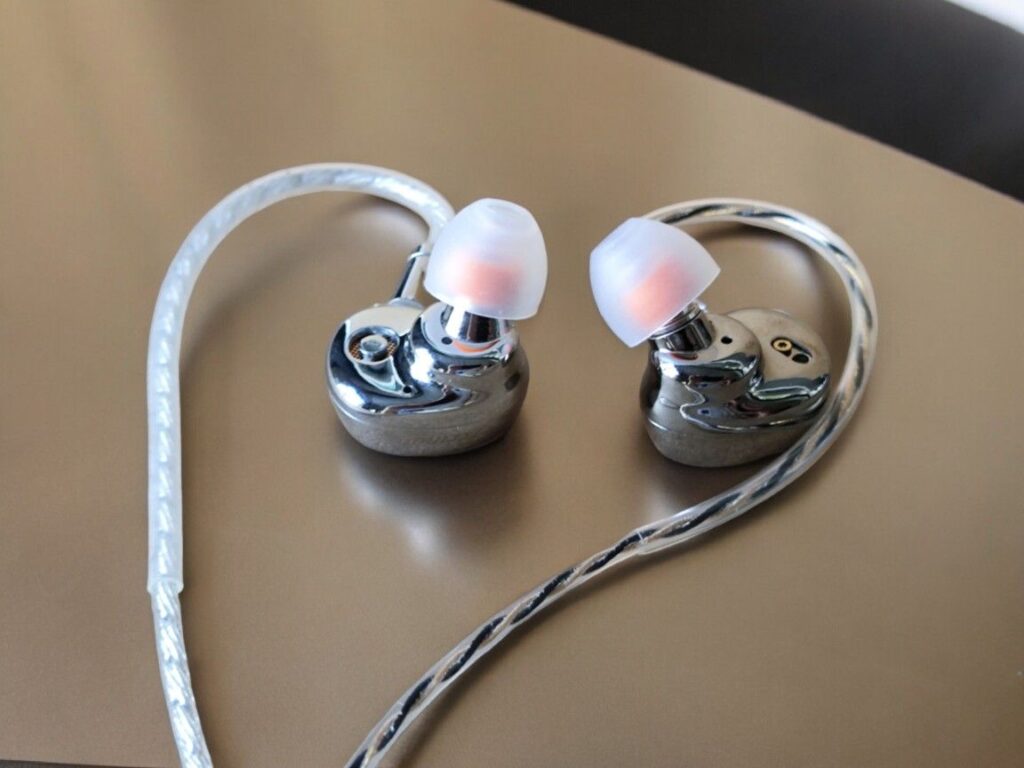
Jambi by Tool
EA1000 with red ring steel nozzles: The bass is full sounding with both, but looser sounding with the EA500LM, the EA1000 has better definition. The midrange is warmer with the EA1000.
EA1000 with golden brass nozzles: EA1000 is bold and full. The EA500LM is less full-bodied and not as effortless and organic-sounding.
EA1000 with black ring steel nozzles: they’re very similar tonality-wise, with a little bit more clarity and better separation with the EA1000 than with the EA500LM.
Smile by Pearl Jam
EA1000 with red ring steel nozzles: It sounds tighter and clearer with the EA1000, better definition and separation, warmer mids; the vocals are a bit more upfront.
EA1000 with golden brass nozzles: the EA1000 is warmer-sounding but still has a tighter and better-defined bass. The EA1000 also has finer nuances and sounds a bit more delicate.
EA1000 with the black ring steel nozzles: They’re more similar than not. However, the EA1000 still has something extra. It just sounds a little better, with a higher sense of flow and effortlessness.
Almost Like The Blues by Leonard Cohen
EA1000 with red ring steel nozzles: The EA1000 is a bit clearer with a powerful yet tighter bass. The difference is smaller than on some other tracks.
EA1000 with golden brass nozzles: The bass of the EA1000 is tighter, and the vocals are warmer. There’s more fine nuance and sense of flow with the EA1000; the EA500LM is crisper and has a less bold sound.
EA1000 with black ring nozzles: The bass of the EA500LM is looser and less defined than the EA1000, which now is even tighter sounding. Otherwise, they sound quite alike.
Black Crow by Cassandra Wilson
EA1000 with red ring steel nozzles: The bass is definitely better defined with the EA1000, while still being full bodied.
EA1000 with golden brass nozzles: The EA1000 is warmer and fuller sounding, with a very nice presentation and a nice sense of fluidity. The EA500LM has a bit better separation, and it’s a little crisper but isn’t quite as effortless sounding.
EA1000 with black ring steel nozzles: Now, the EA1000 has better separation of instruments and more precise imaging. The vocals have more nuance and texture. The EA500LM sounds a bit dull in direct comparison.
Some Day My Prince Will Come by Coryell-Coryell-Vitous
EA1000 with red ring steel nozzles: again, the EA1000 is clearer sounding, but otherwise they’re relatively similar.
EA1000 with golden brass nozzles: With this nice jazz trio, the EA1000 has a warmer midrange and a balanced bass performance. The EA500LM has a relatively stronger and less defined bass. The soundstage is similar.
EA1000 with black ring steel nozzles: They become more similar, with the EA1000 sounding crisper with a less pronounced midrange.
As Before by Olga Konkova
EA1000 with red ring steel nozzles: The EA1000 has better clarity, dynamics and punch, and a warmer midrange.
EA1000 with golden brass nozzles: The EA1000 is warmer sounding, yet still delivering some extra finer detail and nuance.
EA1000 with black ring steel nozzles: They are relatively close, but the EA1000 has a bit more air and separation. There’s more fine detail. The tonality is pretty close; the EA500LM has a somewhat thicker bass. I really appreciate them both, but technically, the EA1000 is a step up.
Escape Route by Boris Blank
EA1000 with red ring steel nozzles: The EA1000 is generally clearer and warmer without being much crisper.
EA1000 with golden brass nozzles: the EA1000 has warmer mids, but doesn’t have more bass quantity. However, the bass quality is better, with more definition.
EA1000 with black ring steel nozzles: EA500LM has a fatter bass, and the EA1000 is more refined. However, they sound more alike than not, roughly speaking.
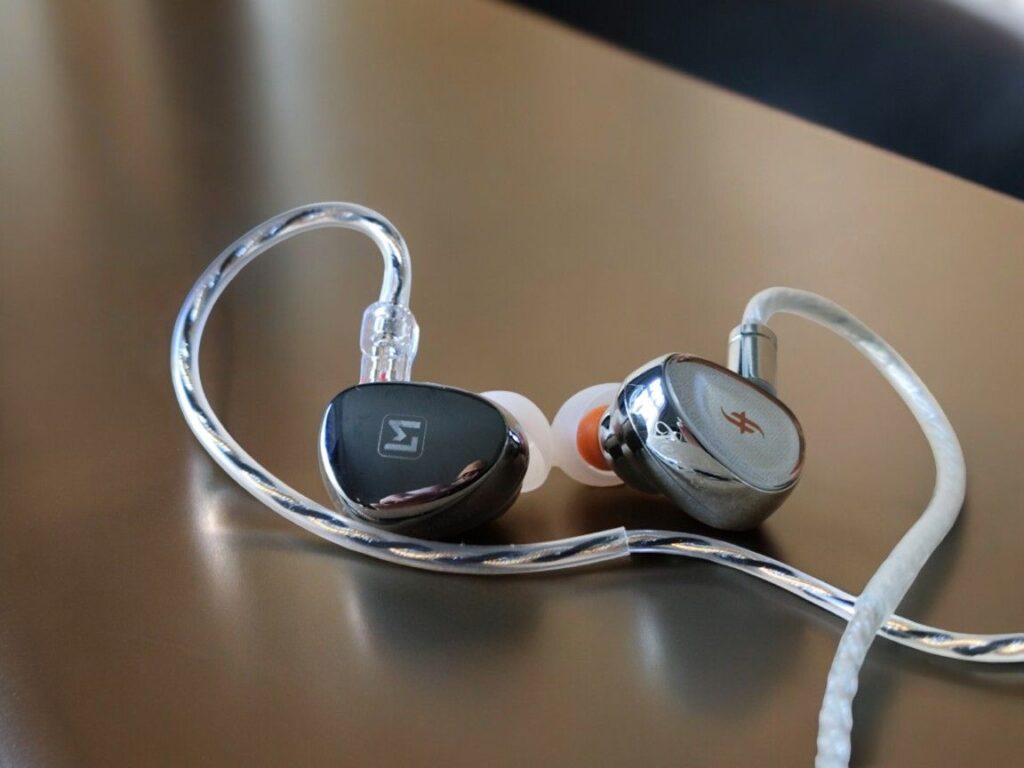
Spontaneous Compositorius by Thomas Agergaard
EA1000 with red ring steel nozzles: The EA1000 is clearer, with a crisper treble, the EA500LM has a thicker bass and more polite highs.
EA1000 with golden brass nozzles: The saxophone is wonderful with the EA1000. The percussion is crisp and clear. The bass is strong but well defined. Moving over to the EA500LM, the bass is even stronger but also rounder. The saxophone is drawn a bit back. The various treble-intensive percussion elements are very nice with the EA500LM. It’s liquid, resolved, and very non-fatiguing.
EA1000 with black ring steel nozzles: The EA1000 have tighter bass. Generally, it has a bit more detail, also in the treble. However, the treble isn’t as deliciously smooth and liquid as the treble of the smaller sibling, making me prefer the EA500LM here.
The Dark Inside of Cabbage by Fire!
EA1000 with red ring steel nozzles: Another bass, sax, and percussion jazz improv. Despite the title, this track is quite groovy. The EA1000 is cleaner and clearer with tighter bass and better separation of instruments. The midrange is warm, the bass is strong, but not as full sounding as the EA500LM
EA1000 with golden brass nozzles: Again, the sax is more pronounced with the EA1000, and the bass is looser-sounding with the EA500LM.
EA1000 with black ring steel nozzles: Both earphones are highly enjoyable. The EA500LM has a delicious fat bass and a very nice performance. The EA1000 is very similar but technically better; it has a bit less boldness and a clearer sound.
Sunrise by Norah Jones
EA1000 with red ring steel nozzles: With both earphones Norah Jones’s vocals are very up front. The EA1000 has strong, tight bass, the EA500LM is a bit rounder. EA1000 has better imaging.
EA1000 with golden brass nozzles: They sound quite similar. The EA1000 has slightly more warmth in the vocals with a little more detail, but they are more alike than not.
EA1000 with black ring steel nozzles: They sound a bit different on this track. Most noticeable is the fuller and thicker-sounding bass off the EA500LM; the soundstage is also a bit smaller than with the EA1000.
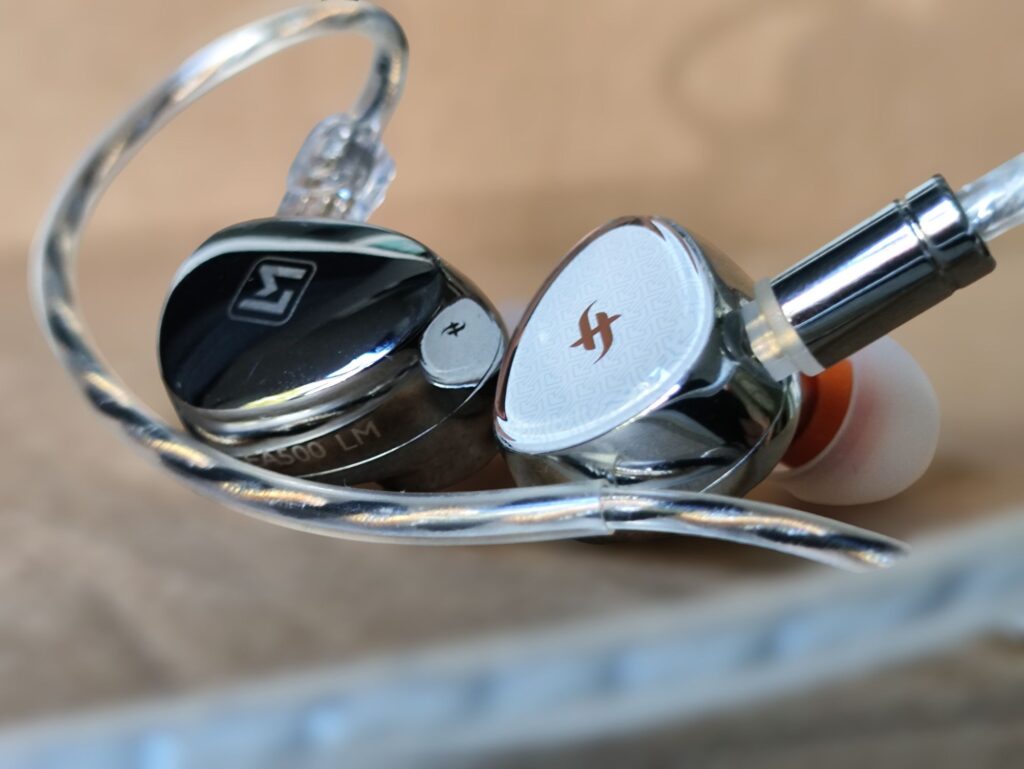
WRAPPING IT UP
Sound Signature
If you’ve read through the comparisons, you know that the difference in sound signature to some extent depends on the tuning nozzles.
I have basically compared three versions of the EA1000 to one version of the EA500LM.
With the EA500LM, I find it quite easy to settle on the open red ring steel nozzles as both the best and most neutral. With the EA1000, I’m not that confident.
Starting with the open red ring steel nozzles, which I am pretty sure is identical on the two, there are some key differences. The EA1000 has a more present midrange, it’s got crisper highs and tighter bass. The EA500LM feels a bit more laid back with the softer treble, a more polite midrange and a fatter, looser sounding bass.
Using the (mostly) warmer sounding golden brass nozzles on the EA1000 mainly makes them even warmer sounding in the mids.
Using the black ring steel nozzles on the EA1000 makes the midrange quite similar to the EA500LM, but increases the difference in the bass and highs where the EA1000 gets both tighter and crisper.
Treble
Both have a present but not overly bright treble with good detail and natural
The EA1000 is slightly more detailed and a bit crisper and more articulate. This goes for all three nozzles, even though they are slightly different. The EA500LM might be less refined but it has a very appealing smoothness in its delivery.
Midrange
Both have a present and slightly warm midrange. Compared to the EA1000 with the red ring nozzles, the midrange is more polite with the EA500LM. This is also true with the golden brass nozzles on the EA1000, where the difference is even bigger.
Compared to the EA1000 with the black ring steel nozzles, the EA500LM is often (but not always) slightly fuller sounding. There is more midrange detail on the EA1000, but for the most part, the two earphones are more alike than not.
Bass
The bass is an area where the EA1000 constantly performs significantly better. It is tighter, with more texture and definition, with both nozzles. I really like the bass of the EA500LM too, but in direct comparison it lacks definition. Often, though, the fuller but rounder presentation is very appealing.
Soundstage and Imaging
They both have a nice soundstage and good imaging. Compared to the EA1000 with the golden brass nozzles, the EA500LM is equal, and sometimes better, but with both the red and black ring steel nozzles on the EA1000, the EA1000 is a step up with a bigger soundstage, better instrument separation and black background, along with more precise imaging.
Detail, Dynamics and Timbre
I find them both to have very good detail and dynamics, but the EA1000 is generally better – defending its higher price tag. That being said, the difference between them doesn’t always feel very significant. It depends on the track. Sometimes it’s more like two different flavours, other times, the EA1000 is clearly more capable.
When it comes to timbre, they’re not too far apart. The treble sounds natural with both, but the EA500LM is more laid-back and liquid sounding. The midrange is relatively similar, in a very natural-sounding manner. I do, however, find the timbre of the midrange with the golden brass nozzles mounted on the EA1000 to be superior.
The bass sounds more neutral and less coloured with the EA1000, while the EA500LM is thicker sounding and not as good in terms of texture and definition.
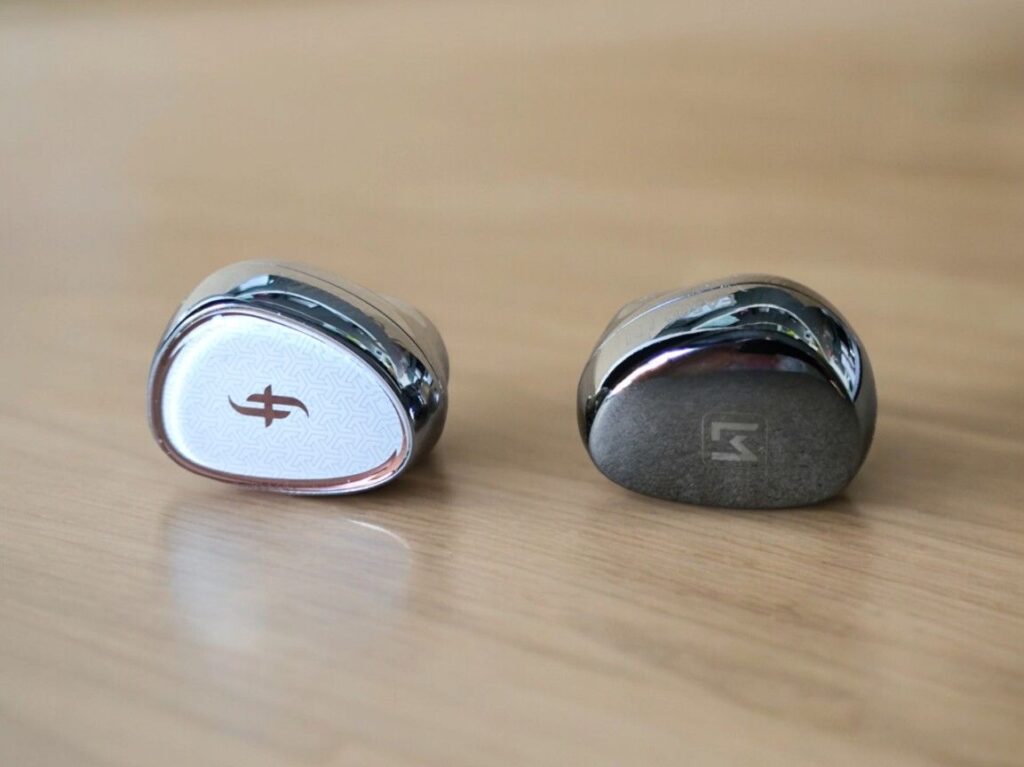
CONCLUSION
The Simgot EA500LM and EA1000 are both fantastic-sounding full-range dynamic driver IEMs, both proving that Simgot pushes boundaries on price and performance, while not compromising on build quality.
They share a lot of DNA and are tuned very similarly, and occasionally they can even be hard to tell apart. What I like the most about them is how natural and well-balanced they are.
The differences between them in terms of tonality, timbre, dynamics, detail, soundstage, and imaging depend on what tuning nozzles are used. However, the EA1000 generally offers better technical performance.
Overall, both earphones deliver excellent, well-balanced sound quality with a natural sounding timbre. They are also beautifully crafted. This makes them very appealing alternatives from Simgot at their respective price points
You can support us by purchasing anything using our affiliate links:
- Linsoul: Simgot EA1000
- Amazon: Simgot EA1000
Any purchase you make on Amazon or Linsoul with any of our affiliate links will give us a small provision at no cost to you.
We only get a provision for items that are not returned, so there’s no incentive for us to recommend something that’s not good.
Linsoul : Headphones, Earbuds, Wireless Earbuds, Desktop DAC/AMP, Portable DAC/AMP, Digital Audio Players,
Amazon: Headphones, IEMs, Headphone Amplifiers, Home Audio or Anything else.
.
If you enjoyed this article or other content on The Headphoneer, you might consider leaving a small donation to keep this website up and running. No donation is too small. Thanks for supporting us!
If you like our work please follow us on Instagram, Facebook and Twitter , it will help us grow. Sharing is caring 🙂


